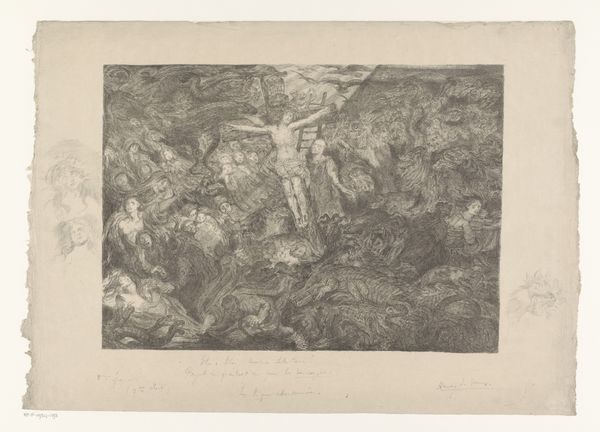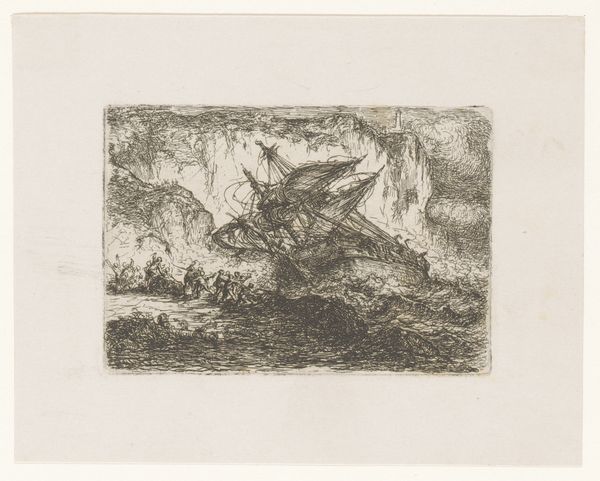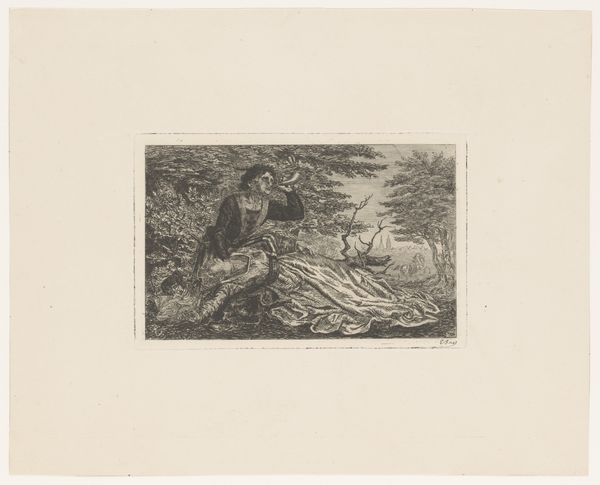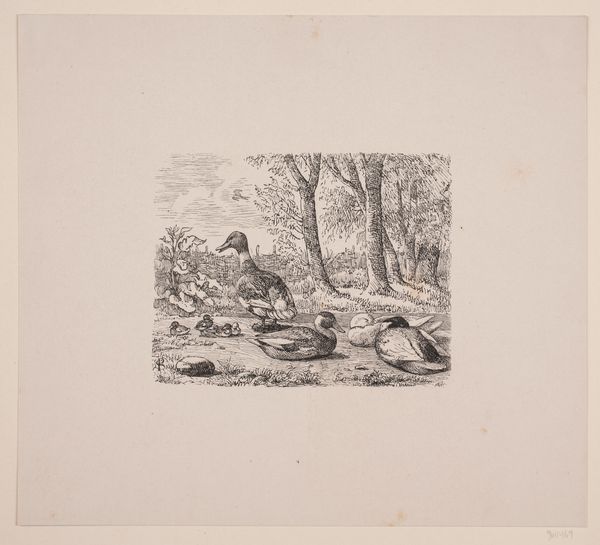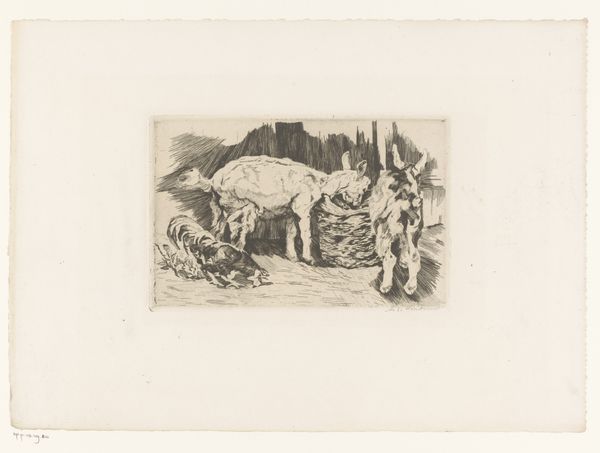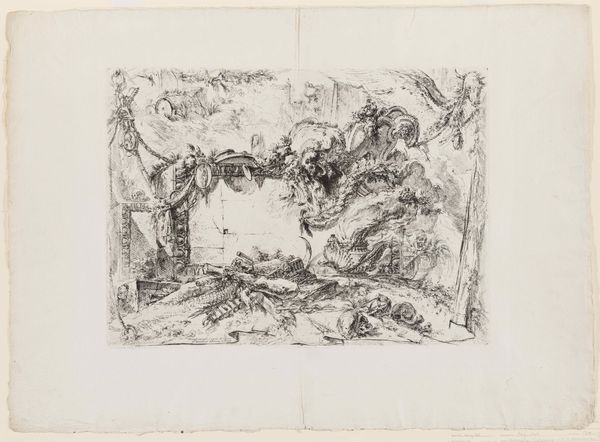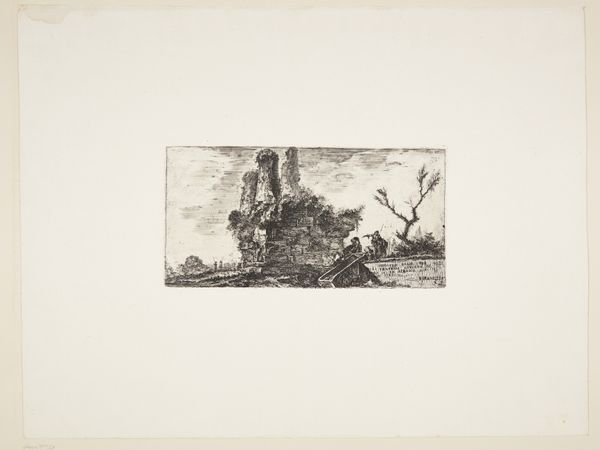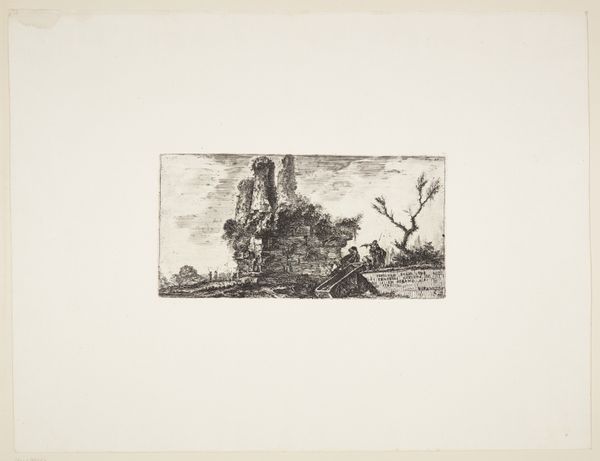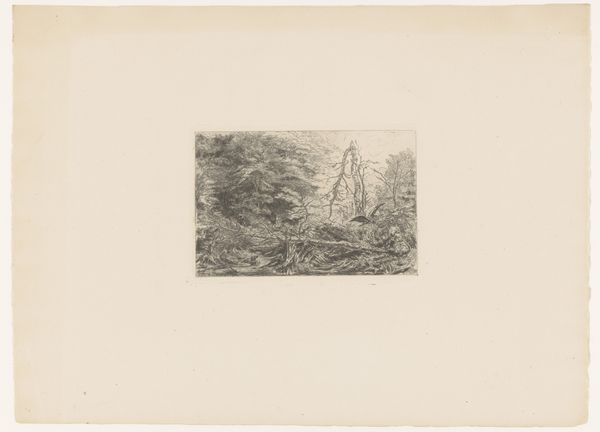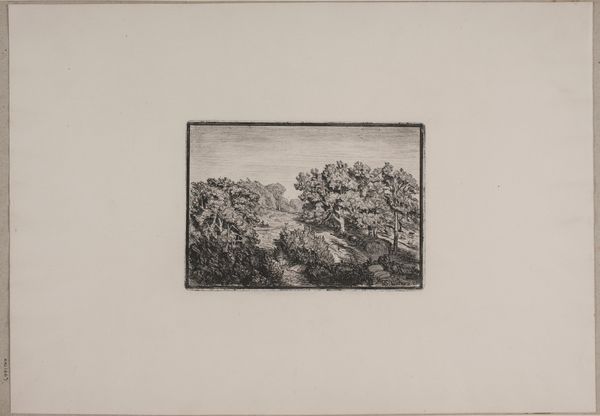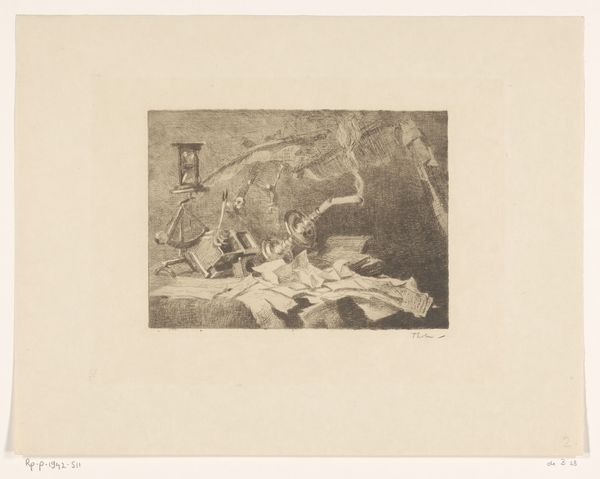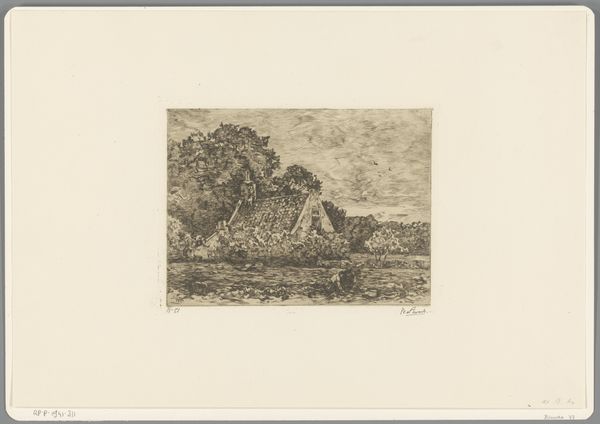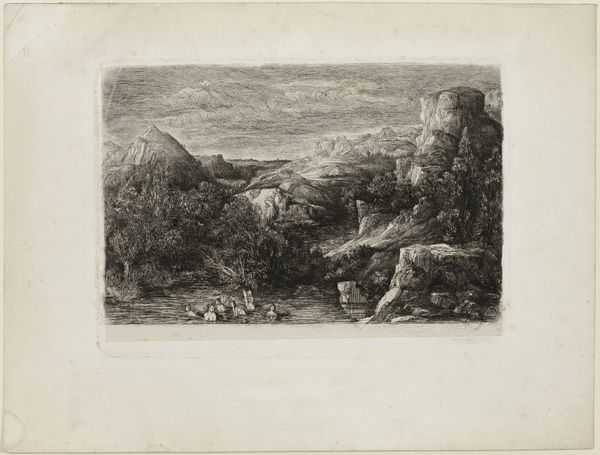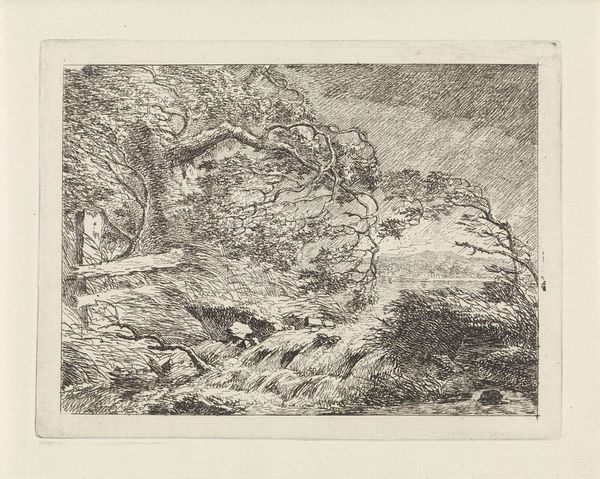
Ancient altar on which sacrifices were performed in antiquity, surrounded by other ruins 1743
0:00
0:00
Dimensions: 241 mm (height) x 347 mm (width) (plademaal), 241 mm (height) x 347 mm (width) (billedmaal)
Giovanni Battista Piranesi made this etching of an ancient altar surrounded by ruins, likely in Rome, sometime in the mid-18th century. It evokes the grandeur and decay of classical civilization, a theme that resonated deeply during the Enlightenment. Piranesi was not just an artist; he was also an antiquarian whose images shaped the era's understanding of Roman history and culture. The visual language of the etching, with its dramatic contrasts and meticulous detail, romanticizes the past, imbuing it with a sense of mystery and sublime power. But these images did more than just document history; they were also commodities in a burgeoning tourist industry. They fed the desires of wealthy Europeans on the Grand Tour who sought tangible connections to the classical world. To fully understand Piranesi's work, we must consult archaeological records, travelogues, and the history of the art market itself. Only then can we appreciate the complex interplay of art, commerce, and cultural identity in his vision of antiquity.
Comments
No comments
Be the first to comment and join the conversation on the ultimate creative platform.
